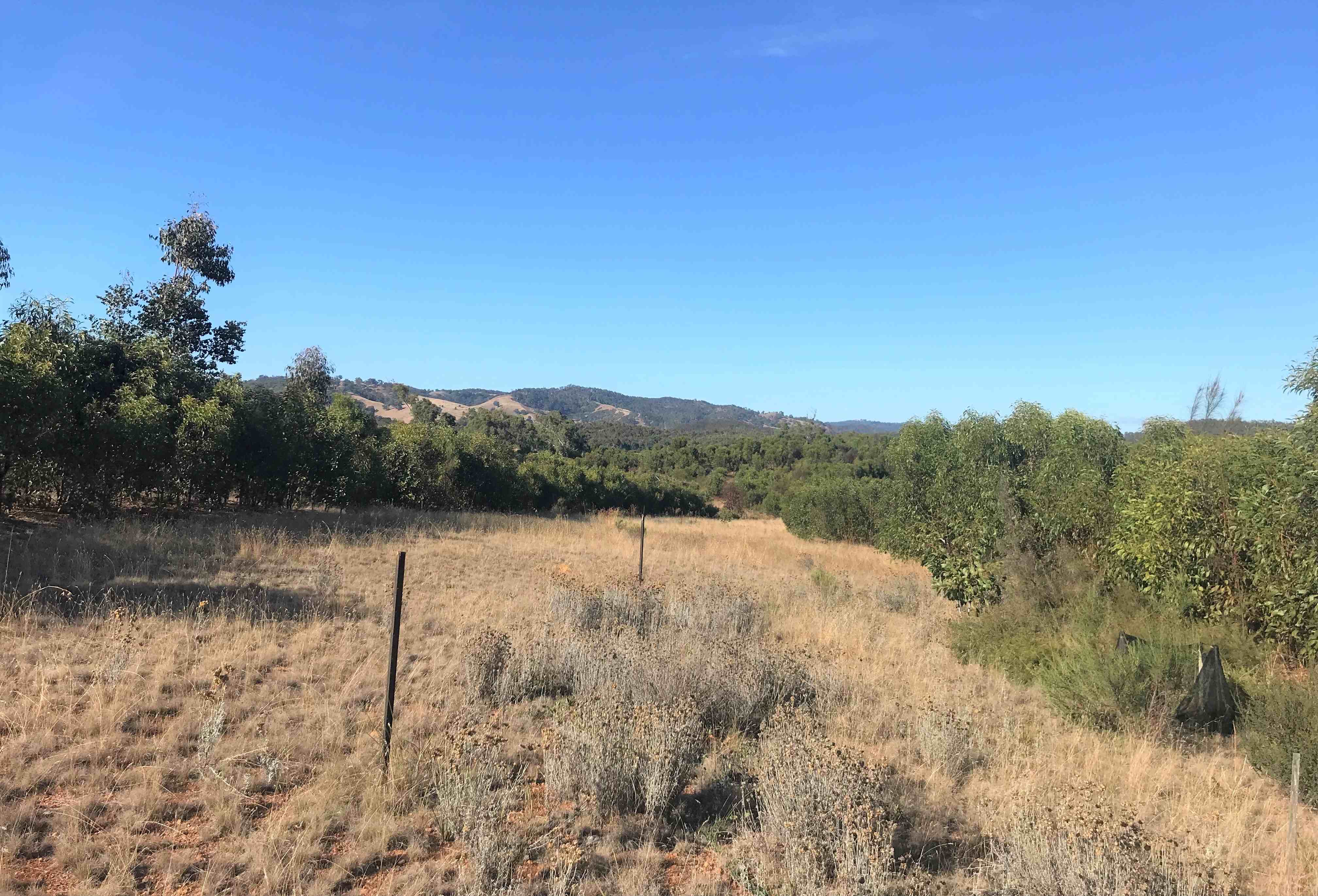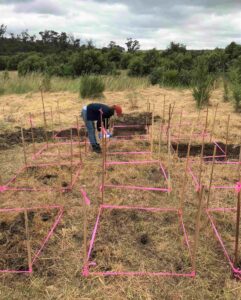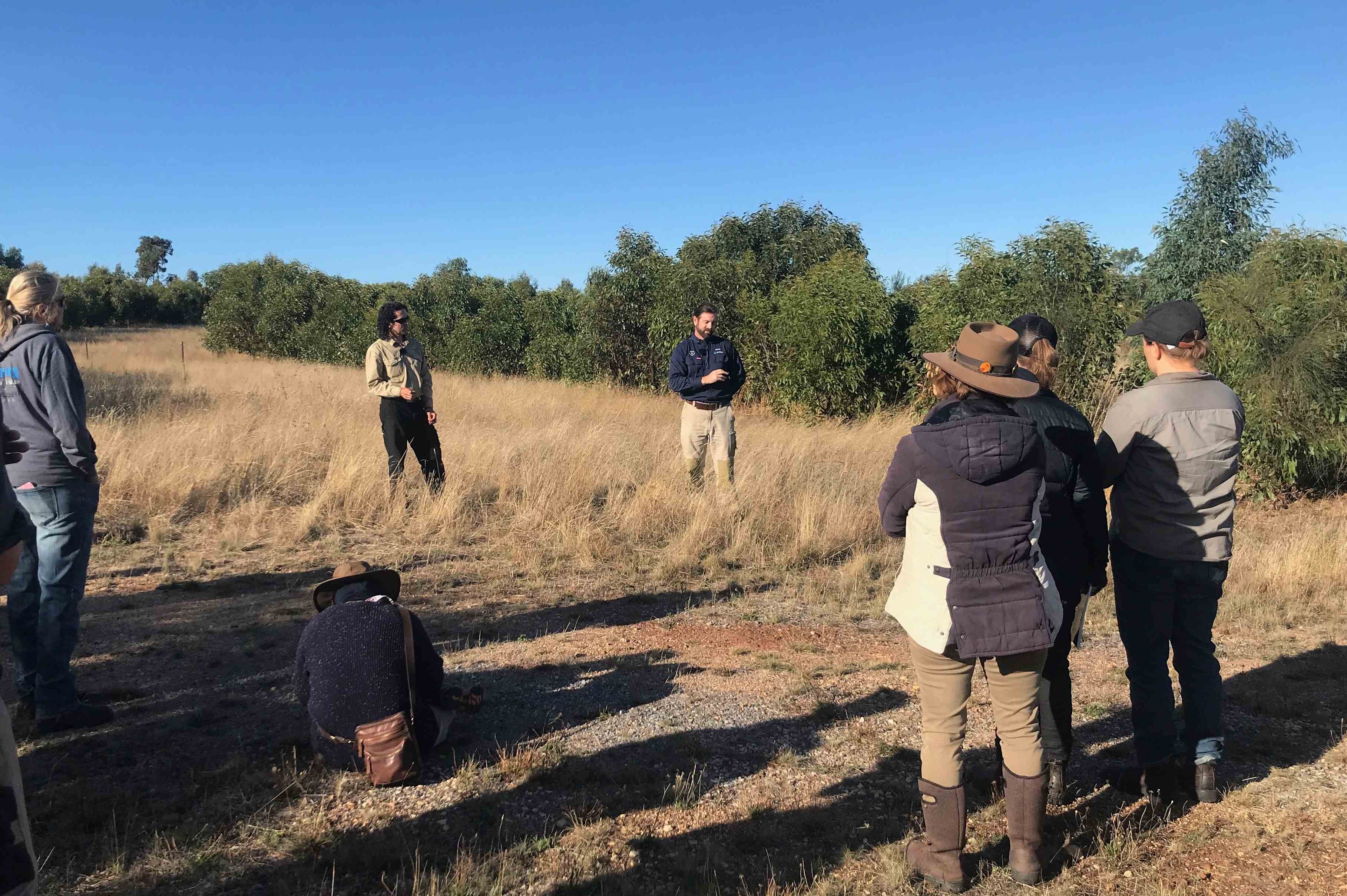
An SA Water revegetation site is thriving – and is also giving Flinders University students exposure to field work opportunities that provide valuable biodiversity and ecology insights.
The innovative Millbrook Reservoir Reserve project involves restoring a 24-hectare site into a thriving open grassy woodland habitat with 82 native plant species and more than 2.2 million native grasses.
The project has won the Environmental Stewardship Award at the 2023 Parks and Leisure Australia (SA/NT) Awards of Excellence and is competing for the national award in October.

Flinders University Associate Professor of Biology Martin Breed, who uses the revegetation project at Millbrook as a case study for his students, says PhD student Tarryn Davies, who did her honours project at the site, is now being sponsored by SA Water for her PhD.
He says the initiative sets an exemplary standard for ecosystem restoration.
The grassy woodland system – established in 2018 – is representative of a habitat type that is incredibly rare across South Australia’s Mounty Lofty Ranges and combines trees and large shrubs with swathes of grasses and flowering plants.
The habitat’s reconstruction has seen the re-emergence of woodland bird species such as the Buff-rumped Thornbill and Dusky Woodswallow, says SA Water’s Vegetation Services Specialist Shaun Kennedy.
“As a result of continued land clearance ever since colonisation, only 13 per cent of native vegetation remains throughout this entire region with one of the scarcest habitat types being our grassy woodlands,” says Mr Kennedy.
“Many species of native birds and other animals depend on these threatened woodlands, and they are vital to the health of broader ecosystems through their role in nutrient cycling, pollination and seed dispersal.
“To offset vegetation removal as part of enabling our major dam safety upgrade at Kangaroo Creek Reservoir – completed in 2019 – we took the opportunity to rehabilitate this particular area of Millbrook that was devoid of native vegetation.
“Our innovative restoration blends both ‘top-down’ and ‘bottom-up’ revegetation techniques to establish tree and shrub habitat structure, as well as sowing a diverse understorey component to disperse throughout the site.
“The planting designs have also been tailored to the undulating landform of this area to create Box, Pink, Blue and Red Gum Woodlands with transient wetlands supporting a rich variety of species.
“Repurposed tree limbs from Kangaroo Creek were also converted into 70 log stacks and placed at key spots around the site to provide habitat for birds and reptiles, helping attract breeding pairs of the declining Dusky Woodswallow, along with the return of three other threatened species.”

Revegetation initiatives like this are critical to creating healthy catchments and ecosystems, which underpin our ability to protect water quality and preserve our native flora and fauna for future generations, says Associate Professor of Biology Martin Breed, who researches restoration ecology, ecosystem health and genomics at the College of Science and Engineering.
“The world has a dire need for innovative and functional ecosystem restoration, and it’s found one in SA Water’s revegetation project at Millbrook,” says Associate Professor Breed.
“Guided by intelligent and bold leadership, this initiative shines a much-needed optimistic ray of hope on the cloudy environmental conditions we now found ourselves in due to the ecosystem degradation, biodiversity and climate crises.
“By sharing it with our peers and students, I hope it inspires the next generation of restoration scientists, practitioners and policymakers to be just as bold – our environment needs it!”

